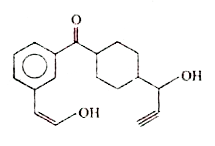A compound(A) reacts with thionyl chloride to give compound (B). (B) reacts with magnesium to form Grignard reagent which is treated with acetone and the product is hydrolysed to give 2-methyl-2-butanol.
What is(A) compound?
Butanol
Propanol
Methanol
Ethanol
The correct Answer is:D
To determine the compound (A) that reacts with thionyl chloride to yield compound (B), which subsequently forms a Grignard reagent and leads to the final product of 2-methyl-2-butanol, we can follow these steps:
Step 1: Identify the Final Product
The final product given is 2-methyl-2-butanol. This compound has the following structure:
- Structure of 2-methyl-2-butanol:
- It has a total of 5 carbon atoms (C5).
- The structure can be represented as:
CH3|CH3−C−OH|CH2−CH3
Step 2: Understand the Reaction Pathway
We know that compound (B) reacts with magnesium to form a Grignard reagent. Grignard reagents are typically formed from alkyl halides. Therefore, compound (B) must be an alkyl halide.
Step 3: Determine Compound (B)
Since the final product is 2-methyl-2-butanol, we can deduce that compound (B) must be a halide that can lead to this alcohol upon reaction with acetone and hydrolysis.
- Possible structure of compound (B):
- The alkyl halide that would lead to 2-methyl-2-butanol when reacted with acetone is 2-methyl-2-bromobutane (or a similar halide).
Step 4: Identify Compound (A)
Compound (A) reacts with thionyl chloride (SOCl2) to form compound (B). Thionyl chloride typically converts alcohols into alkyl chlorides.
- Since we are looking for an alcohol that can yield 2-methyl-2-bromobutane (compound B) upon reaction with thionyl chloride, we can deduce that compound (A) must be an alcohol with a structure that can lead to the formation of a secondary or tertiary halide.
- Possible structure of compound (A):
- The simplest alcohol that can lead to 2-methyl-2-bromobutane when treated with thionyl chloride is 2-methyl-2-butanol itself, which upon losing water and reacting with SOCl2, can yield the corresponding alkyl halide.
Conclusion
Thus, the compound (A) is 2-methyl-2-butanol.
The final product given is 2-methyl-2-butanol. This compound has the following structure:
- It has a total of 5 carbon atoms (C5).
- The structure can be represented as:
CH3|CH3−C−OH|CH2−CH3
We know that compound (B) reacts with magnesium to form a Grignard reagent. Grignard reagents are typically formed from alkyl halides. Therefore, compound (B) must be an alkyl halide.
Since the final product is 2-methyl-2-butanol, we can deduce that compound (B) must be a halide that can lead to this alcohol upon reaction with acetone and hydrolysis.
- The alkyl halide that would lead to 2-methyl-2-butanol when reacted with acetone is 2-methyl-2-bromobutane (or a similar halide).
Compound (A) reacts with thionyl chloride (SOCl2) to form compound (B). Thionyl chloride typically converts alcohols into alkyl chlorides.
- The simplest alcohol that can lead to 2-methyl-2-bromobutane when treated with thionyl chloride is 2-methyl-2-butanol itself, which upon losing water and reacting with SOCl2, can yield the corresponding alkyl halide.
Thus, the compound (A) is 2-methyl-2-butanol.
Topper's Solved these Questions
Similar Questions
A compound (A) reacts with thionylchloride to give a compound (B). (B) reacts with magnesium to form a Grignard reagent which is treated with acetone and the product is hydrolysed to give 2-methyl butan-2-ol. What are the structural formulae of (A) and (B) ?
View SolutionDraw the structure of the compound :
3-methyl-2-butanol
View Solution
Knowledge Check
Secondary amine react with carbonyl compound to give:
AImineBSchiff's baseCHydrazoneDEnamineAmong the following compounds which will react with acetone to give a product containing
 AC6H5NH2B(CH3)3NCPh−N∣H−PHDPh−N∣H−NH2
AC6H5NH2B(CH3)3NCPh−N∣H−PHDPh−N∣H−NH2
Which of the following reagents will not react with above compound ?ANa metalBAgNO3+NH4OHCCu2Cl2+NH4OHDNaHCO3
A compound X react with Na2O2 and forms Y, Y is reacted with nitric acid and then treated with ammonium molybdate to give yellow ppt.
View SolutionAmong the following compounds, which will react with acetone to give a product containing

View SolutionWhich of the following compound reacts with Grignard reagent to produce alkane?
View SolutionA compound 'A' when reacts with LiAlH4 it gives two compounds B and C along with LiCl. Compounds A, B and C respectively are
View SolutionAldehydes other than formaldehyde react with Grignard reagent to give addition products which on hydrolysis give
View Solution
